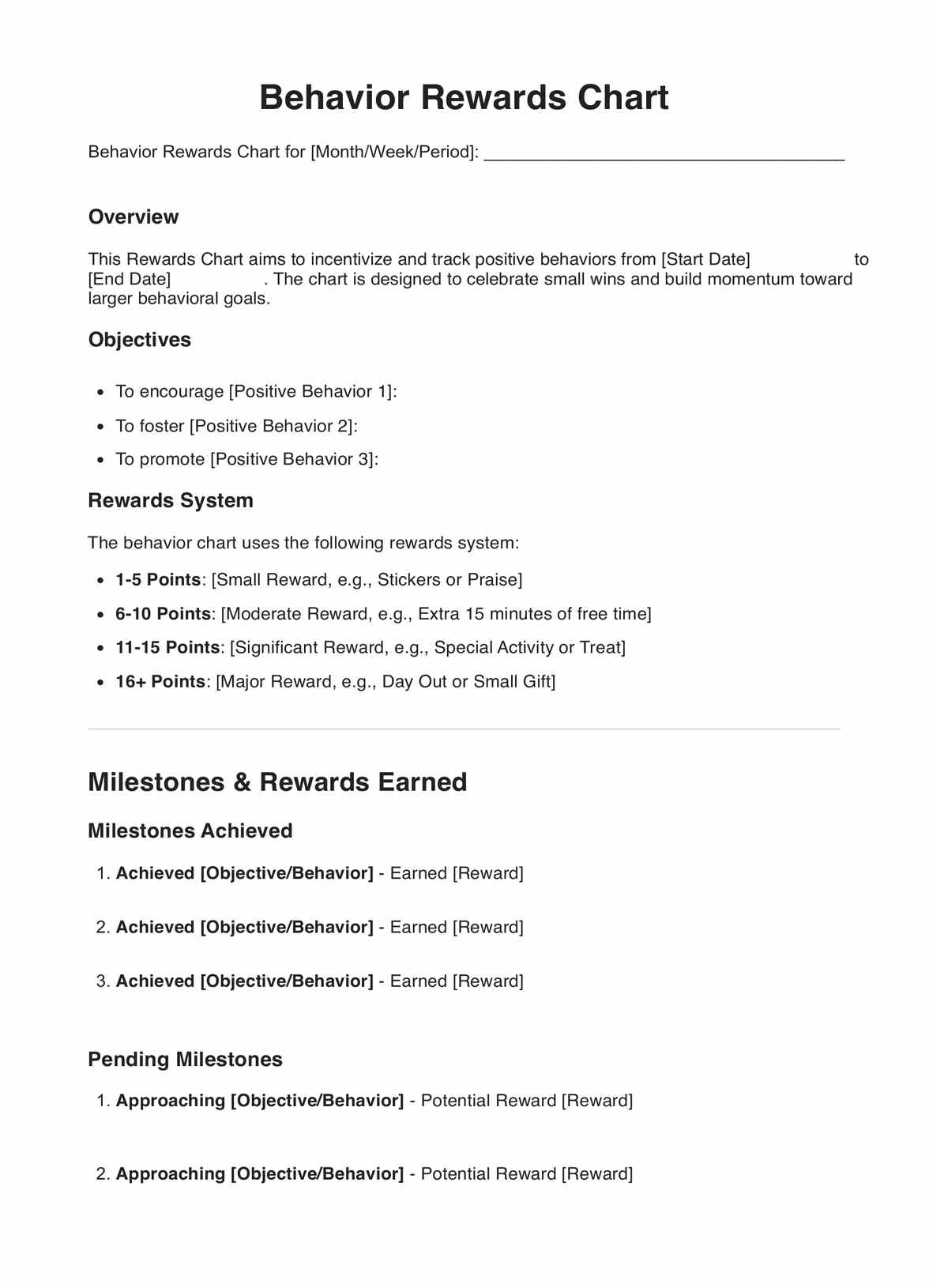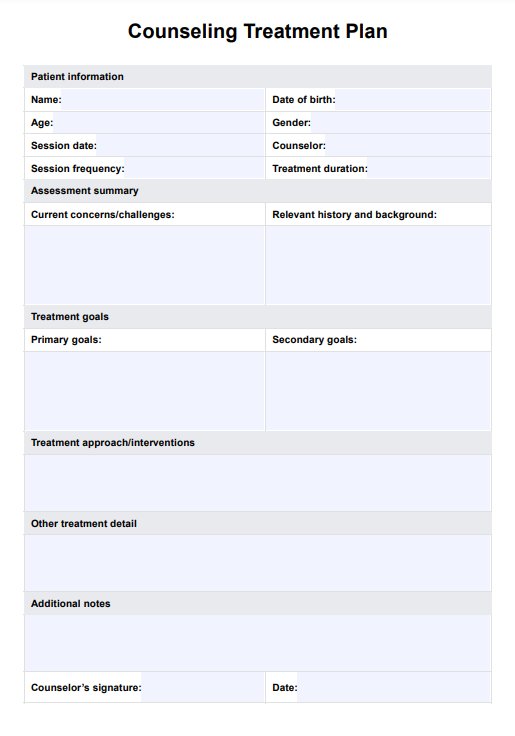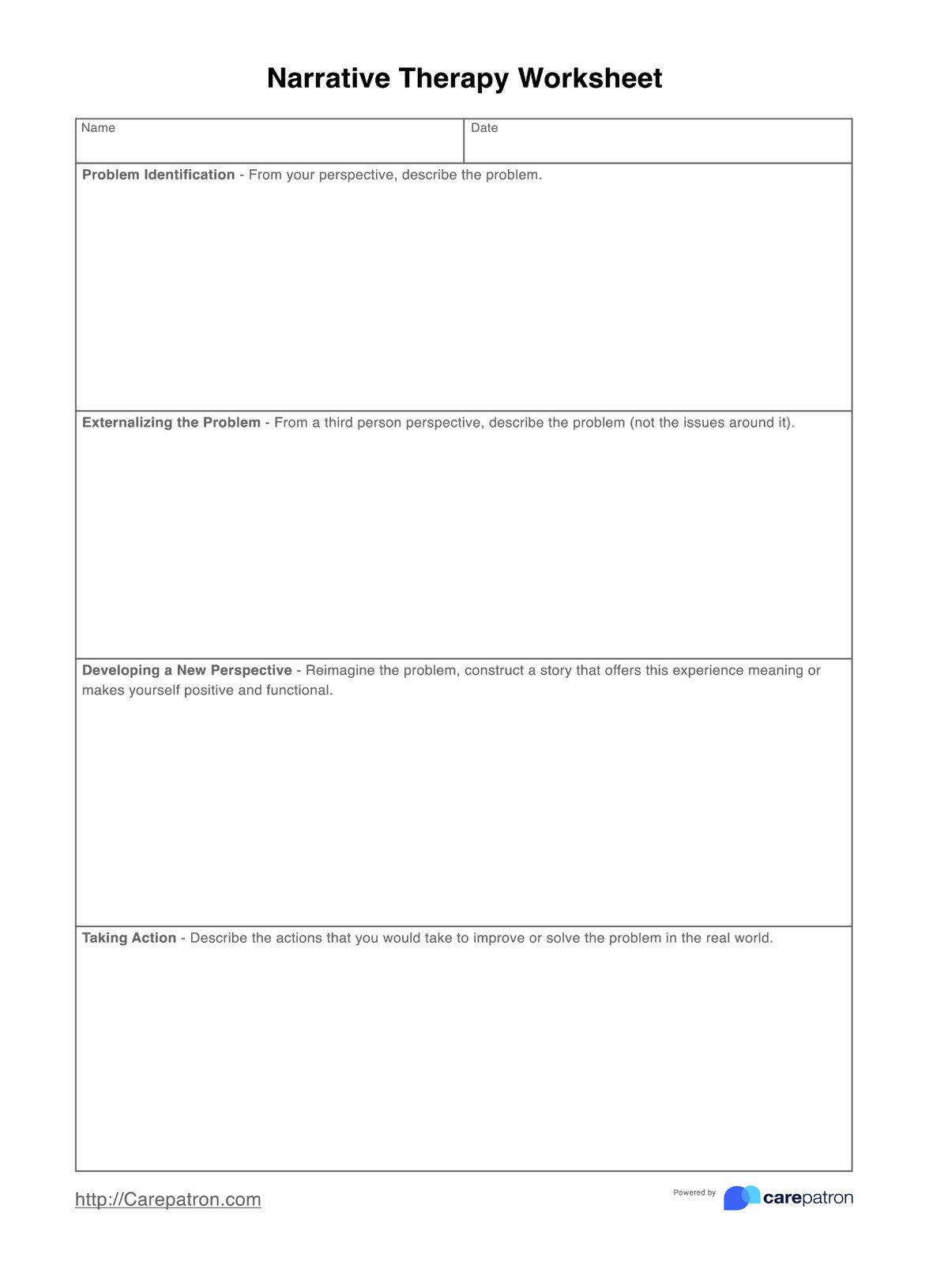Exposure Record ACT Worksheet
Discover how the Exposure Record ACT Worksheet helps manage distress by improving psychological flexibility.


What is Acceptance and Commitment Therapy?
is a form of psychotherapy that falls under the umbrella of cognitive-behavioral therapies. It aims to help individuals develop psychological flexibility by teaching them to handle complex thoughts and emotions effectively while pursuing a meaningful and value-driven life. ACT is based on the premise that struggling against or avoiding negative feelings and thoughts can lead to psychological distress and instead encourages acceptance of these experiences as part of being human.
About shame, depression, and defectiveness coping behaviors, ACT offers a unique approach. Shame often arises from a strong sense of self-criticism and judgment, leading to avoidance and emotional suppression. ACT addresses shame by fostering self-compassion and encouraging individuals to embrace their feelings without judgment, thereby reducing the power of guilt over their lives.
Depression, characterized by persistent low mood and loss of interest, can be exacerbated by attempts to avoid or suppress negative feelings. ACT helps individuals accept their emotions and thoughts while promoting mindful awareness of these experiences. This can lead to a more flexible response to depression and reduce the cycle of rumination.
Defective coping behaviors involve compensating for perceived flaws by overachieving or people-pleasing. ACT targets these behaviors by helping individuals recognize that they are not defined by their thoughts and feelings, allowing them to break free from patterns of avoidance and self-sabotage.
Exposure Record ACT Worksheet Template
Exposure Record ACT Worksheet Example
How to use the Exposure Record ACT Worksheet
1. Identify the Target
Begin by pinpointing the distressing thought, emotion, or situation you wish to address. Clearly define the discomfort you feel and establish a goal for exposure.
2. Rate Distress
On a scale from 1 to 10, rate the intensity of the distress associated with the target. This establishes a baseline to track your progress.
3. Describe the Experience
Articulate the details of the distressing experience. Include thoughts, emotions, physical sensations, and behaviors associated with it.
4. Rate the Believability
Assess how much you believe the thoughts related to the distressing experience. This step helps you understand the power of those thoughts over your emotions.
5. Choose an Exposure Technique
Select an exposure technique from the worksheet that aligns with your target and comfort level. Exposure techniques include mindfulness, visualization, or controlled confrontation.
6. Set a Time Limit
Decide on a predetermined duration for the exposure exercise. Start with a manageable timeframe and gradually increase it as you build tolerance.
7. Engage in Exposure
Begin the exposure technique you've chosen. Allow the distressing thoughts, emotions, or sensations to arise without trying to avoid or suppress them. Remember, the goal is to build acceptance and psychological flexibility.
8. Reassess Distress Level
After completing the exposure, re-rate the intensity of your distress. Note any changes or shifts in your emotional experience.
9. Reflect on Beliefs
Consider any alterations in the believability of the distressing thoughts. Exposure often leads to a shift in perspective and reduced attachment to these thoughts.
10. Track Progress
Over time, track your exposure exercises, distress ratings, and changes in beliefs. This record serves as a visual representation of your growth and progress.
When would you use this Exposure Record ACT Worksheet?
The Exposure Record ACT Worksheet is a versatile tool derived from Acceptance and Commitment Therapy (ACT), designed to enhance psychological flexibility and manage distress. Here's a brief list of situations where utilizing this assessment can be particularly effective:
- Facing Specific Phobias: The worksheet is ideal for confronting specific phobias and anxieties. It helps individuals gradually expose themselves to feared situations or objects, reducing avoidance behaviors and building resilience.
- Managing Trauma: For individuals dealing with traumatic experiences, the worksheet aids in addressing distressing memories and emotions, fostering healing and coping skills development.
- Battling Anxiety Disorders: Individuals struggling with anxiety disorders can benefit from the worksheet by systematically exposing themselves to anxiety-inducing stimuli. This process can lead to decreased reactivity and increased emotional regulation.
- Overcoming Obsessions and Compulsions: The worksheet is helpful for those with obsessive-compulsive tendencies. It guides individuals in facing triggering thoughts and compulsions, promoting healthier behavioral patterns.
- Healthcare Professionals' Role: Mental health professionals, including psychologists, counselors, and therapists, can employ this worksheet to guide their clients through exposure exercises. It assists in tailoring therapy sessions to individual needs and promoting lasting change.
- Self-Guided Growth: The worksheet can empower individuals to improve their psychological well-being. It provides a structured framework for self-guided exposure and personal growth.
- Handling Negative Self-Image: When dealing with shame, low self-esteem, or negative self-perception, the worksheet can aid individuals in confronting these emotions and fostering self-compassion.
The Exposure Record ACT Worksheet is a valuable asset for mental health professionals, enabling them to provide targeted treatment for various conditions. Simultaneously, individuals can independently utilize it to confront distressing thoughts, emotions, or situations and cultivate psychological resilience. Whether under the guidance of a healthcare professional or as part of personal growth endeavors, this tool is aptly suited to aid in managing distress and promoting psychological well-being.
What are the benefits of using this Exposure Record ACT Worksheet?
The free Exposure Record ACT Worksheet offers a structured approach to Acceptance and Commitment Therapy (ACT), providing individuals with numerous advantages for cultivating psychological flexibility and managing distress effectively.
1. Gradual Exposure for Reduced Avoidance
The worksheet facilitates gradual exposure to distressing thoughts, emotions, or situations. Research, such as the study by Twohig et al. (2010), emphasizes that gradual exposure effectively reduces avoidance behaviors and enhances emotional regulation.
2. Improved Coping Mechanisms
By systematically engaging with distressing experiences, individuals can develop healthier coping mechanisms. This aligns with the findings of Arch et al. (2012), which highlight the importance of exposure-based interventions in improving emotional resilience.
3. Enhanced Emotional Regulation
Utilizing the worksheet aids in desensitizing negative emotions. Research by Levin et al. (2016) suggests that exposure therapy can lead to decreased emotional reactivity, allowing individuals to manage their emotions more effectively.
4. Increased Tolerance for Discomfort
Through controlled confrontation, individuals learn to tolerate discomfort. This aligns with Hayes et al.'s (2006) ACT model, emphasizing the importance of accepting and making room for difficult emotions.
5. Reduction in Avoidance Patterns
Per the ACT principle of defusion, engaging with the worksheet promotes reduced avoidance of distressing thoughts and emotions. Research by Forman et al. (2007) underscores the role of defusion techniques in breaking the cycle of avoidance.
6. Empowerment for Self-Guided Growth
The worksheet empowers individuals to take charge of their well-being. This self-guided approach aligns with the research of Powers et al. (2009), showcasing the efficacy of self-help interventions in fostering positive change.
Incorporating the free Exposure Record ACT Worksheet into therapeutic practices or personal growth endeavors can bring these benefits. Drawing research insights underscores exposure-based approaches' effectiveness in fostering psychological flexibility and well-being.
Commonly asked questions
The time required varies based on individual needs and the complexity of the distressing situation. Start with a manageable timeframe and gradually increase it as you become more comfortable.
The worksheet assists individuals in gradually confronting distressing thoughts, emotions, or situations. This exposure process fosters psychological flexibility, reduces avoidance, and promotes healthier coping mechanisms.
The worksheet addresses phobias, anxiety disorders, trauma, obsessions, compulsions, negative self-image, and more. It's adaptable and suits a range of situations where exposure therapy is beneficial.
The worksheet can be used by mental health professionals, therapists, counselors, and individuals seeking self-guided growth. It's a versatile tool for guided therapy sessions and personal development efforts.


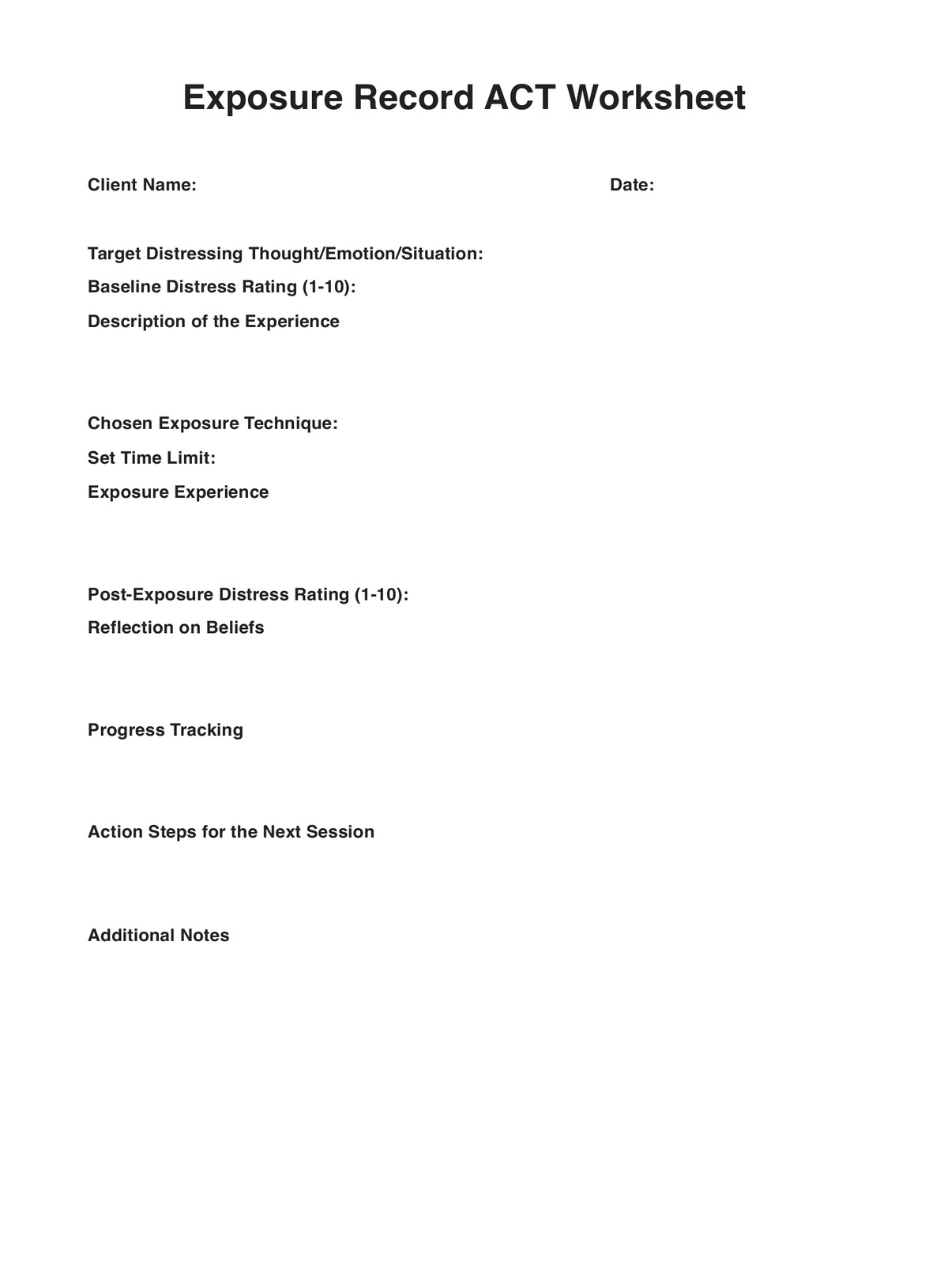
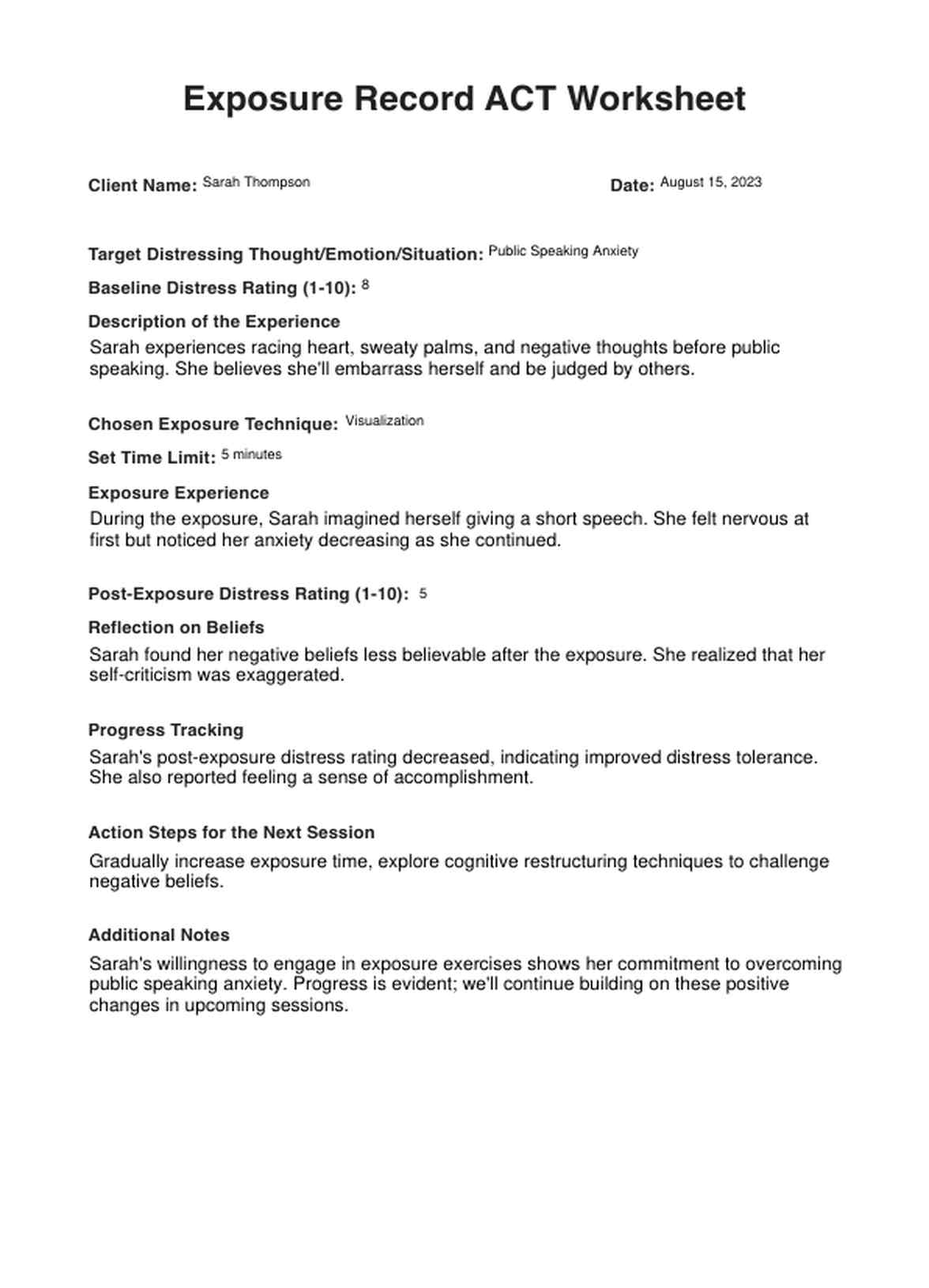

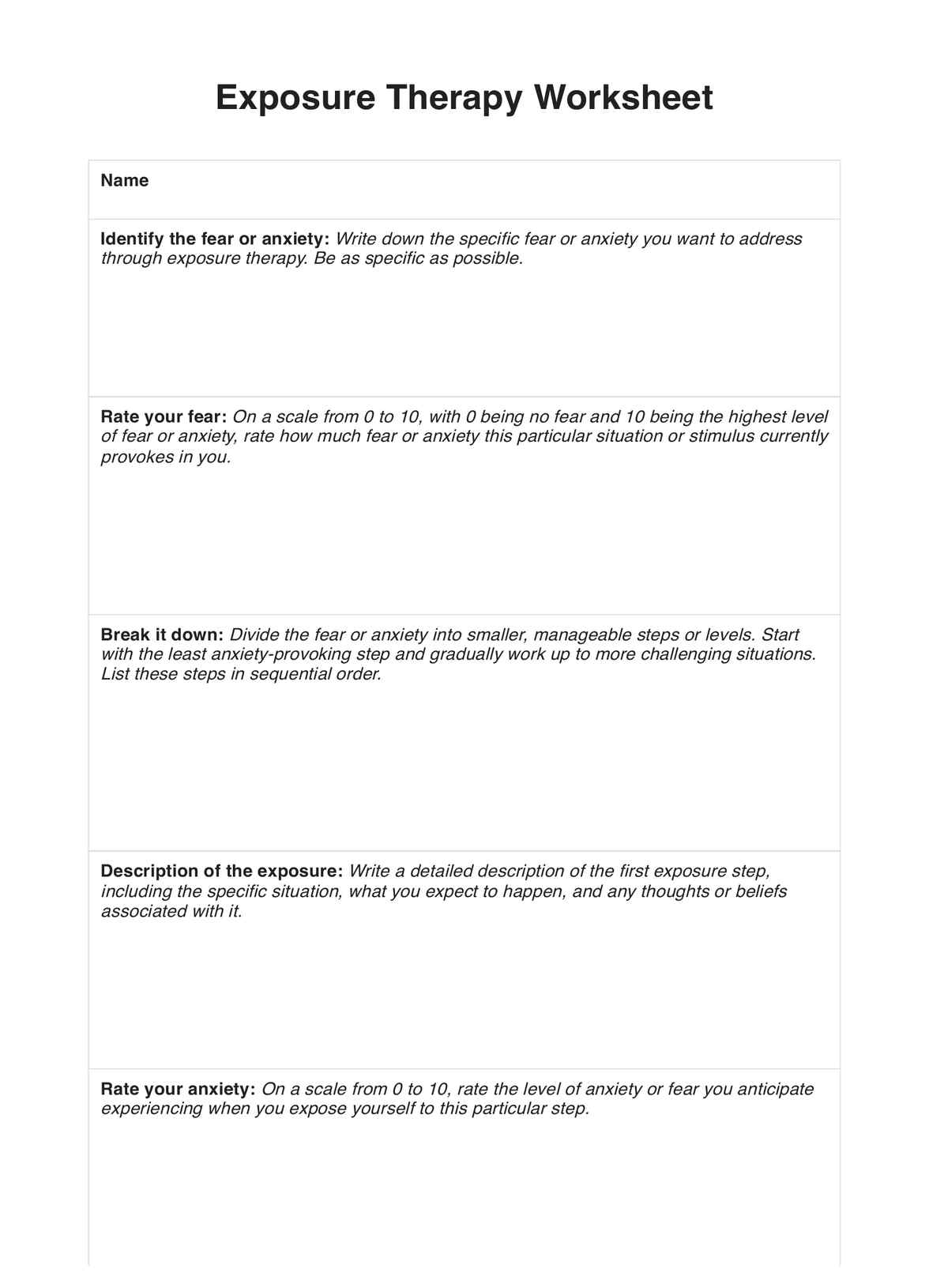














-template.jpg)




























































































